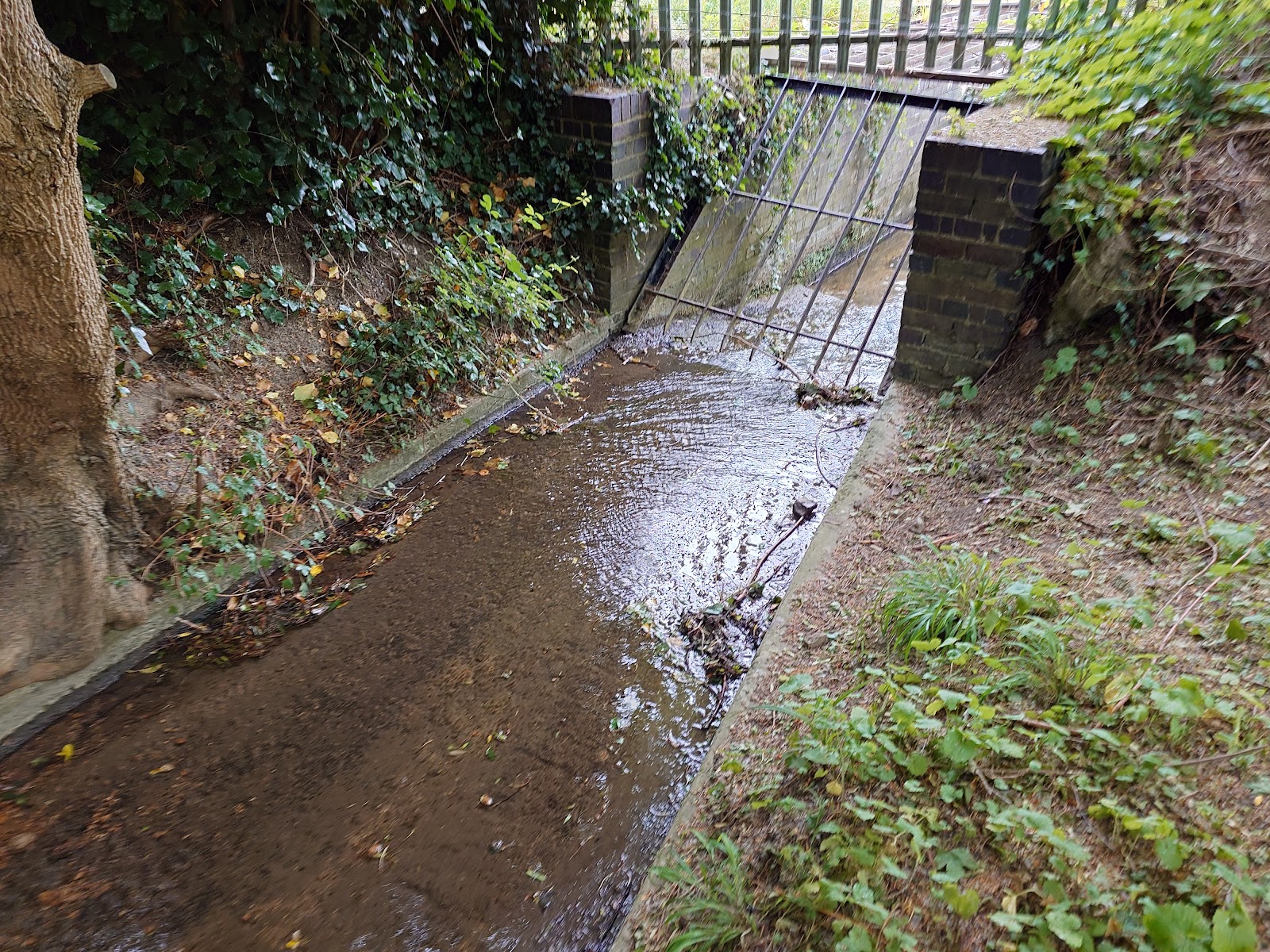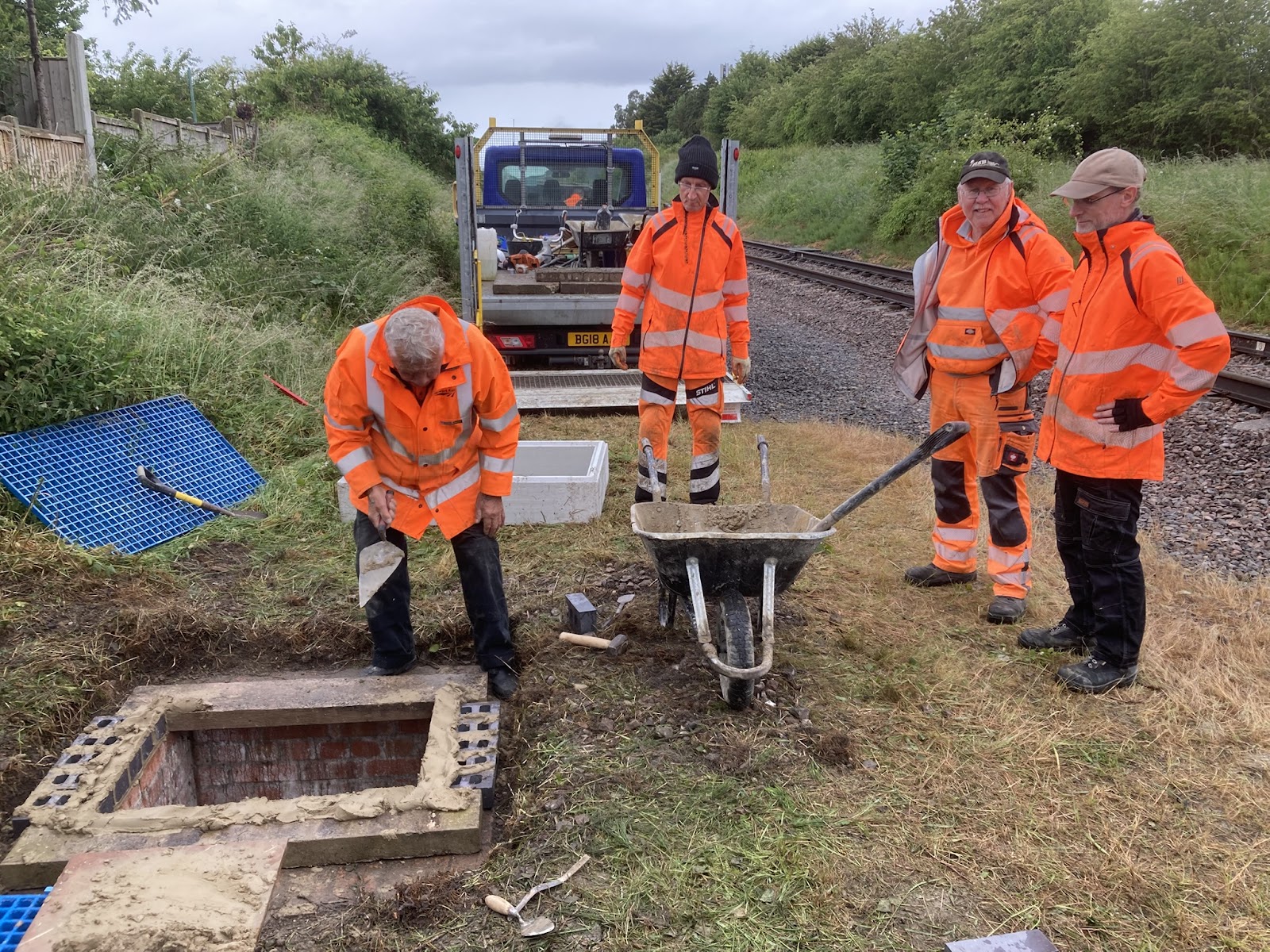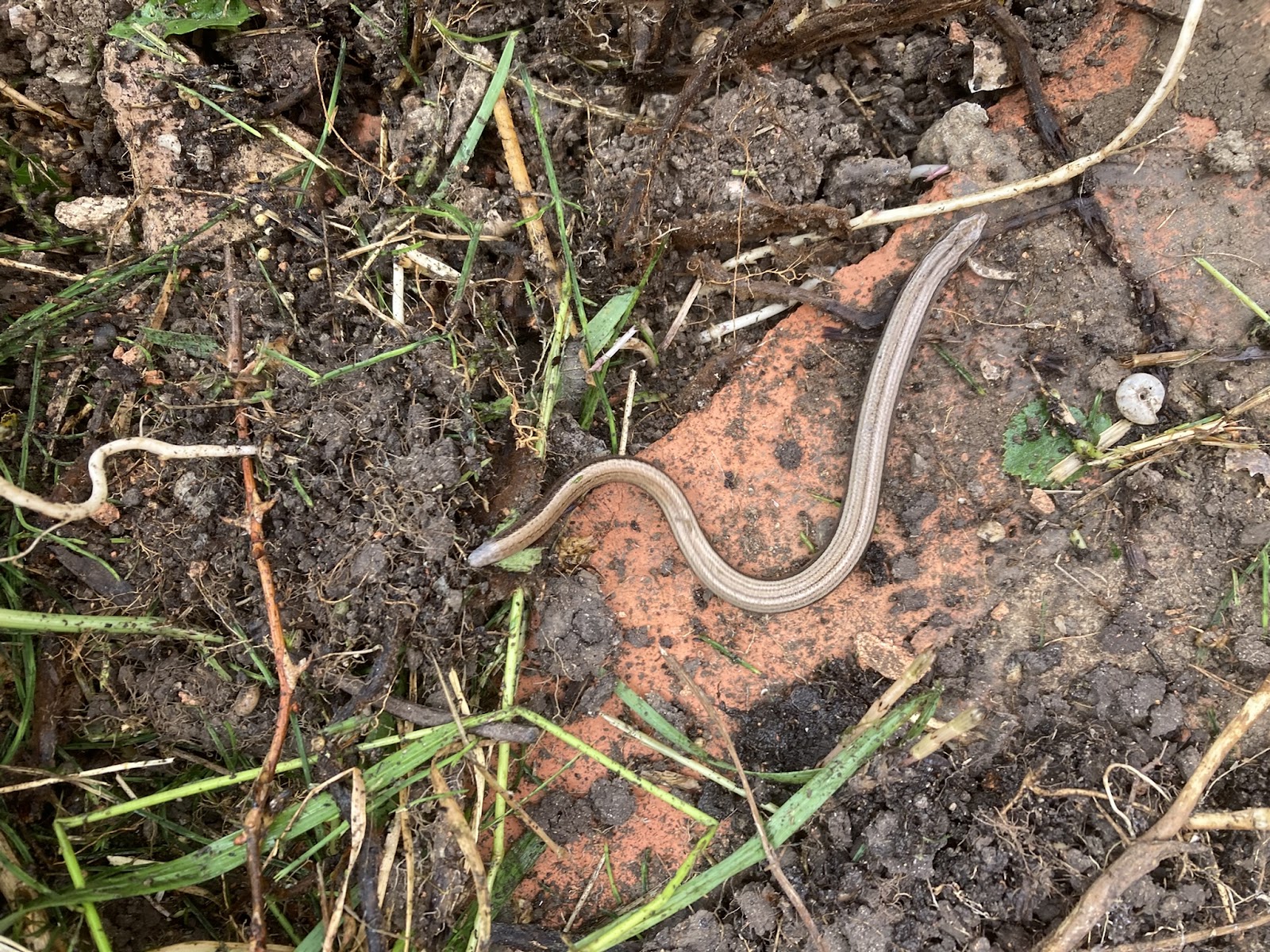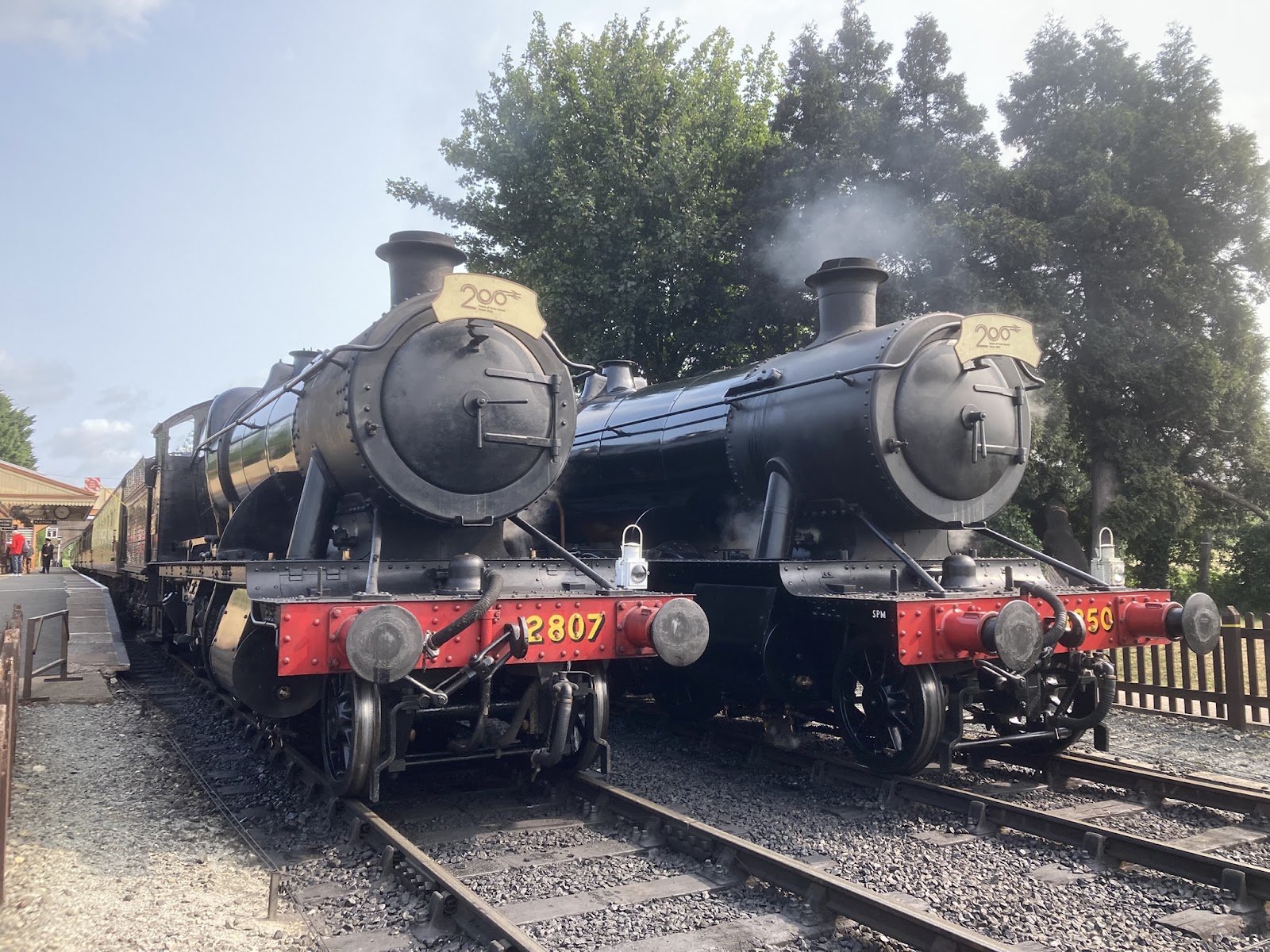Thursday 5th June
Our first wet working day for over two months. Fortunately the heavy shows coincided with morning coffee break and lunchtime.
Two teams, both starting work at Pecked Lane, Bishops Cleeve.
Jonathan, Martin and Peter formed the first team. Their first task was to clear the debris that had accumulated inside culvert 39A; where it splits into two pipes almost at the railway boundary on the up (Malvern) side. They also cleared the trash screen on the down (Cotswold) side inlet in Honeybourne Meadow.
 |
| Checking for gases in the manhole above the split of culvert 39A. This is part of the confined spaces entry procedure we follow. The build up of debris below is very obvious. [Photo by Jonathan] |
 |
| Debris removed - revealing the start of the twin pipes where sticks get caught. [Photo by Jonathan] |
 |
| Cleared trash screen on the inlet of 39A right under the boundary fence. [Photo by Jonathan] |
Then it was a trip down to Elliots to collect a tonne of building sand. An indirect journey back was lineside, which enabled stops for attend to silt clearance at cross drains 37E, 37D, 36B and finally 36A at Manor Lane. Ironically all these clearance tasks were on our ‘dry day’ list! However, the recent rains so far have not significantly increased the flow and, more importantly, the depth of water in these watercourses.
 |
| Martin and Peter clearing silt from the down (Cotswold) side inlet of cross drain 36B. [Photo by Jonathan] |
After lunch, the bag of sand was unloaded in Winchcombe Yard using the telehandler in Jonathan’s capable hands.
Meanwhile, the larger team (Nigel, Dave, Polly, Andrew, Stuart, Roger) headed south of Two Hedges Road to the point where the cutting becomes an embankment. The task here was to raise the height of two up side cess chambers to make them more visible; and to replace broken concrete lids with blue mesh. For both chambers we used double (220mm) height GRP chamber rings. One chamber is a standard cess chamber; but the other is where a foul water pipe passes under the railway, effectively cutting through the cess drains on both sides. Probably this chamber and the corresponding one on the down side were built whilst the railway was closed. They are a non standard size. So this meant some of the team returning to Winchcombe to collect two reinforced concrete lintels and a few bricks on which to sit the GRP ring. This delay, together with the heavy rain shower at lunchtime, meant the rebuild took a bit longer than expected. Consequently we postponed attending to some other small tasks between Bishops Cleeve and Gotherington. Typically, arrival back at Winchcombe coincided with the rain stopping. So at least unloading the vehicles, including storing away the reusable concrete lids and concrete chamber ring, took place in the dry.
 |
| GRP ring on the standard cess chamber (left); the bigger chamber with the foul water pipe running through it on the right. |
 |
| Polly completes the reduction base for the GRP ring on the odd sized chamber. |
 |
| Job complete - chambers proud of the ground and with visible blue mesh covers. |
Wildlife report: The headline item today was finding a slow worm south of Two Hedges Road. Otherwise most animal and bird life was sensibly sheltering from the rain.
 | |||
| Slow worm. |
Wednesday 4th June
 |
| Attendance at a meeting at Toddington coincided with the train preparations. The two GWR 2-8-0s make a very pleasing sight when side by side. |
Great to see you all keeping good care of all the drains, etc; I seem to recall when drain 36B was upgraded to its current form, in the latter stages of when the GWSR was being set up!
ReplyDeleteI have to wonder how the drains in the Broadway-Honeybourne segment are doing; there's no way they are getting the same kind of loving care!
jnc - We keep an eye on the old track bed immediately north of Broadway station. This is because the drainage from the station runs that way, under Springfield Lane bridge and towards the bypass. Where the cess drains empty into a stream; the culvert is in pretty reasonable condition. The rest of the trackbed to Honeybourne is rather hidden by lots of vegetation. Andrew.
ReplyDelete